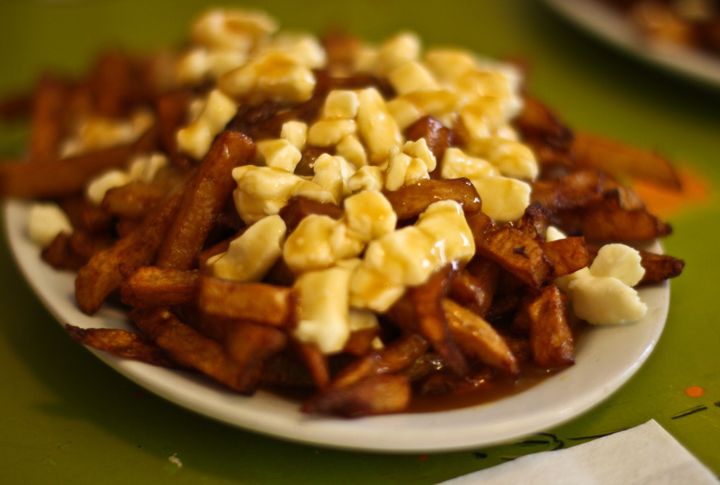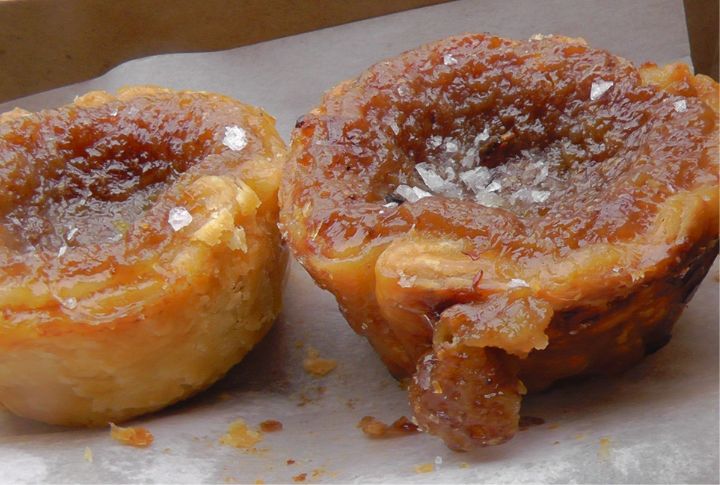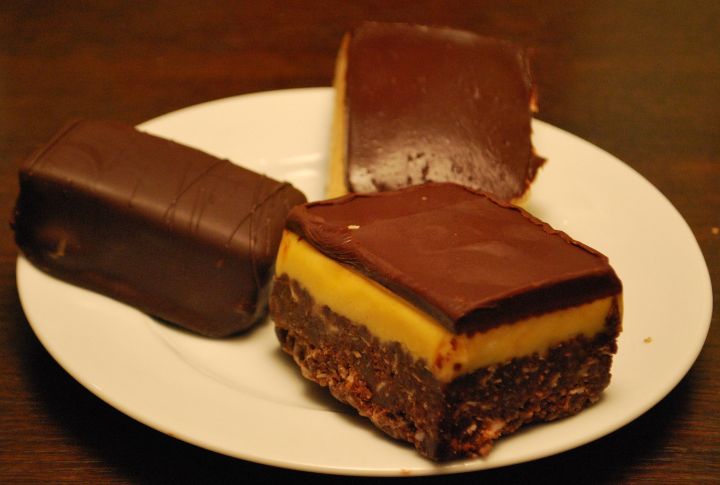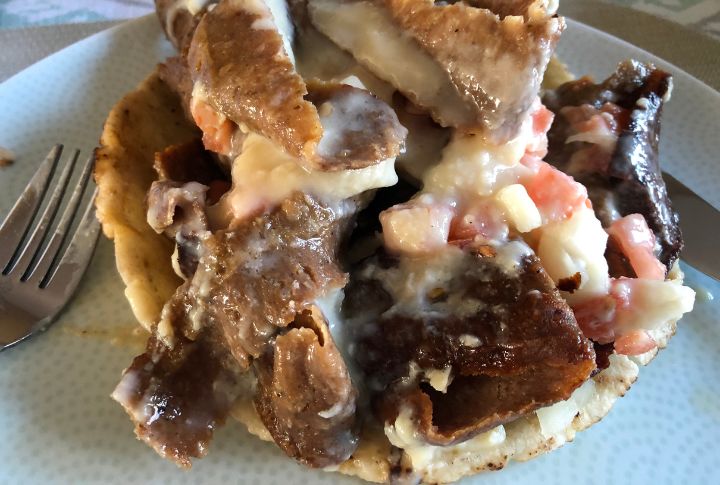
Canadians have a knack for creating dishes that leave Americans puzzled. Flavors, textures, and ingredients come together in ways that seem normal up north but raise eyebrows south of the border. From unexpected chip flavors to daring seafood choices, these foods spark curiosity, strong opinions, and plenty of hesitation.
Flipper Pie

A Newfoundland and Labrador delicacy, Flipper Pie is made from the flippers of young harp seals. Baked into a savory dish with onions, seasonings, and a flaky crust, it’s a traditional meal in coastal communities. Eating seal meat isn’t common in the U.S., which makes this pie an unusual dish.
Oreilles De Crisse

Crispy, deep-fried smoked pork jowls make up this Quebecois snack, often served at sugar shacks with maple syrup. The name translates to “Christ’s ears,” adding to its unique reputation. While Americans enjoy bacon, the idea of fried pork jowls, especially paired with syrup, might not be an easy sell.
Ketchup Chips

A Canadian favorite is potato chips coated in a vibrant red, tangy ketchup-flavored seasoning. The mix of sweet, salty, and vinegary flavors creates a bold taste that Americans aren’t used to in their snacks. While ketchup is a staple on fries, seeing it in chip form feels odd to many.
Tourtiere

This traditional Quebecois meat pie combines ground pork, beef, or veal with warm spices like cinnamon and cloves, all wrapped in a buttery crust. A Christmas staple in Quebec, its distinct blend of seasonings and textures is unlike most American meat pies, which tend to favor more familiar flavors.
Thrills Gum

Bright purple and boldly advertised as tasting like soap, Thrills Gum is a Canadian curiosity. While some find the floral, perfumed flavor nostalgic, others say it reminds them of accidentally getting shampoo in their mouth. Most Americans expect their gum to be sweet or minty, making this an acquired taste.
Poutine

Crispy fries, hot gravy, and cheese curds combine to create Canada’s most iconic comfort food. Though it has gained some traction in the U.S., the gooey, indulgent dish remains firmly Canadian. American fries typically stay simple, with cheese and gravy rarely seen as standard toppings outside diners.
Butter Tarts

This sticky-sweet Canadian dessert features a flaky pastry shell filled with a gooey blend of butter, sugar, and eggs. Some variations include raisins or nuts. While similar to pecan pie in texture, its ultra-rich filling delivers an intense sweetness that may not appeal to everyone.
Nanaimo Bars

Three layers of decadence define this British Columbia-born dessert. A crumbly graham-coconut crust, a creamy custard layer, and a smooth chocolate topping create this decadent, no-bake dessert. Its ultra-sweet, dense texture makes it much richer than most American dessert bars, which tend to have more balanced flavors.
Donair

A Halifax specialty, donair features spiced beef cooked on a rotisserie, sliced thin, and wrapped in a pita. Unlike traditional gyros, it’s topped with a sweet, garlicky, condensed milk-based sauce. Americans accustomed to savory white sauces on Mediterranean-style wraps might find this unexpected sweetness a little off-putting.
Pate Chinois

Quebec’s take on shepherd’s pie features layers of ground beef, creamed corn, and mashed potatoes. The mix of savory meat with sweet corn creates a contrast that divides opinions. While shepherd’s pie is well known in the U.S., this corn-filled variation isn’t nearly as common on American dinner tables.
Maple Taffy

Boiling maple syrup until it is thick, then pouring it over fresh snow to create a chewy candy, is a winter tradition in Canada. It’s simple yet delicious. Using snow as a cooling agent feels old-fashioned to many Americans, who rely on store-bought treats instead of homemade candy.
Cretons

A Quebecois breakfast spread, cretons is made from ground pork mixed with onions, spices, and lard, giving it a rich, pate-like texture. Spread on toast, it’s a staple in French-Canadian households. The idea of pork paste for breakfast might not appeal to Americans, who prefer bacon or sausage patties.
Split Pea Soup With Ham Hock

Thick, hearty, and loaded with yellow split peas, this soup is a winter staple in French Canada. A slow-cooked ham hock adds depth, giving it a smoky, meaty essence. While split pea soup exists in the U.S., this version’s heartier texture and seasoning profile set it apart.
Figgy Duff

Newfoundland’s old-fashioned boiled pudding uses raisins, flour, and molasses to create a dense, cake-like texture. Traditionally steamed in a cloth, it’s served with brown sugar sauce. Americans might hesitate at the idea of a boiled dessert, especially with such a heavy, old-world preparation method.
Moose Heart

Hunters in Canada, especially in Indigenous and rural communities, consider moose heart a prized cut. Whether roasted with stuffing or slow-cooked, this hearty dish is rich in protein and iron. Organ meats are not as commonly consumed in the U.S., and the thought of eating a moose heart is unsettling for many.
Saskatoon Berry Pie

Made with small purple berries native to Canada’s prairies, this pie has a subtly nutty, blueberry-like flavor. Since Saskatoon berries aren’t widely available in the U.S., this dessert remains largely unknown outside Canada. American berry pies favor more familiar fruits like blueberries, cherries, or raspberries.
Beavertails

Canada’s version of fried dough stretches into a long, flat shape resembling a beaver’s tail before getting topped with cinnamon sugar, chocolate, or fruit. While fried dough treats like funnel cakes exist in the U.S., this particular shape and variety of toppings keep it distinctly Canadian.
Muktuk

Muktuk is a staple in Inuit communities; it consists of whale skin and blubber, typically from bowhead, beluga, or narwhal. Served raw, frozen, or pickled, it has a chewy texture with a mild, nutty flavor. Rich in nutrients, it’s essential for Arctic survival. Americans unfamiliar with whale meat might find it unusual.
Peameal Bacon

Unlike the crispy strips familiar in American breakfasts, peameal bacon is a lean, cured pork loin rolled in cornmeal before cooking. The result is a juicy, slightly salty cut with a unique texture. Though it’s called “Canadian bacon” in the U.S., the version found there is quite different.
Bannock

Indigenous traditions include bannock, a bread that can be fried, baked, or grilled. Soft inside with a crisp exterior, it remains widely enjoyed across Canada. While some Native American communities in the U.S. also make bannock, it is more commonly eaten in Canada and holds deep cultural significance there.
Leave a comment